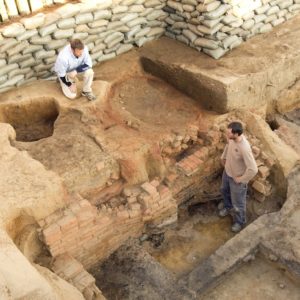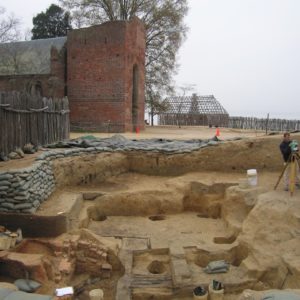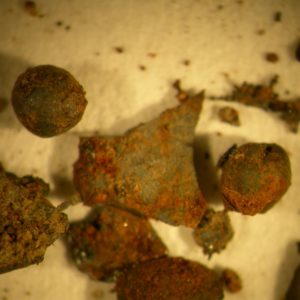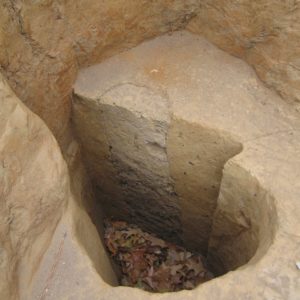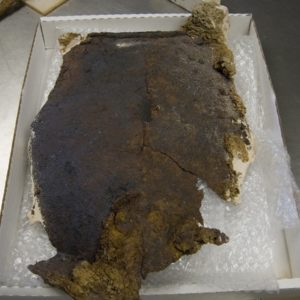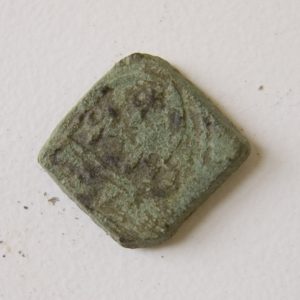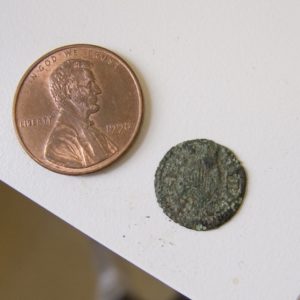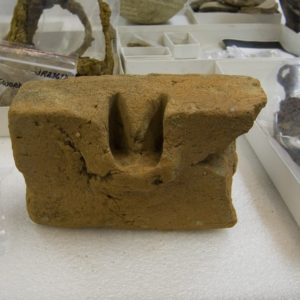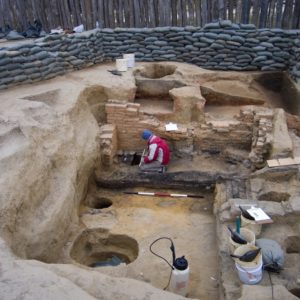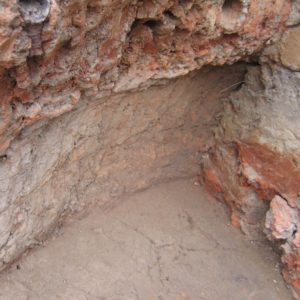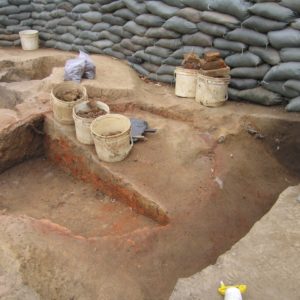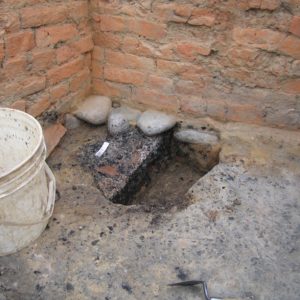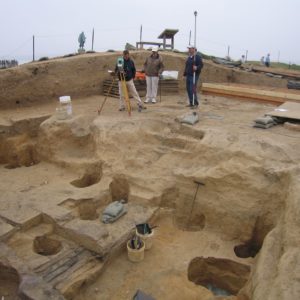The Jamestown Rediscovery archaeology team continues to make exciting discoveries as they peel away the layers of an early-17th-century cellar inside James Fort. Little by little archaeologists have scraped away the earth above the cellar floor and have finally arrived at the occupation layers—the layers of soil on which the colonists actually stood and worked. The process was one that was full of clues into the changes and functions of the cellar during its existence.
It is now understood that the cellar underwent several major changes in form and function over time. The evidence supports that this underground space first served as a workshop/laboratory and ultimately evolved into a kitchen, possibly for the first resident Governor in 1611.
Tiny scraps of iron particles from blacksmithing, some iron tools, small copper scraps and lead drippings litter the cellar floor from the first phase of cellar use. Under a microscope the iron particles appear as small spherical droplets and scales, which is typical of what one would find on the floor of a blacksmith’s workplace. The lead drippings were probably the waste from lead shot (round bullet) manufacture. Furthermore, at this same level of cultural fill archaeologists have discovered high fired clay cups known as crucibles, fragments of ceramic drug jars or chemical pots, and piles of wood ashes, which all suggest that the 1607-1608 experiments of metallurgists looking for precious metals, glassmakers, and soap makers may have taken place in this building.
The later 20′ x 14′ kitchen conversion included two bake ovens sculpted into the clay walls and a brick chimney fireplace foundation. The fireplace remained mostly intact which could represent the oldest surviving brickwork in English America. The two ovens exhibited hard dark red walls, which indicate that multiple fires took place inside. Score marks from the blades of the tools used to carve out the ovens can easily be seen in the oven walls.
Artifacts were not as abundant in the occupation fill layers of the cellar as they had been in the higher fill levels. The reason more artifacts were found in the upper layers is because the settlers used the cellar as a trash pit once it outlived its usefulness, a practice common with other subterranean features at James Fort. All manner of artifacts have turned up in the soil above the cellar floor. Artifacts found in the cellar recently include an English Harrington Farthing (1613/1614) and a coin weight for a French half ecu. Both of these objects are made of copper. Work continues on a breastplate found in the cellar’s upper layers in May. Much of the rust has been removed to reveal the largely-intact armor piece.
Now that fall is giving way to winter, the Jamestown Rediscovery archaeologists are moving inside to write their reports and analyze data from this year’s dig. Look for updates to resume next year when the weather gets warmer.
related images
- Overview of the site at sunrise
- The ovens from above
- The cellar excavations
- Iron scrap from the cellar floor as seen under a microscope
- Cross-section of a posthole inside the cellar
- Breastplate recovered from the cellar in May
- Coin weight for a French half ecu
- Harrington Farthing
- The hoof-print of an animal — probably a pig — imprinted into one of the cellar wall’s bricks
- Archaeologist Mary Anna Richardson at work in the cellar
- Score marks from the tools used by the colonists to dig out the ovens are visible in the ovens’ walls.
- The round boundary of one of the ovens is clearly visible here. The oven’s opening is at the far left.
- An unidentified ash-filled feature
- Archaeologists use the transit to map some of the cellar’s features




